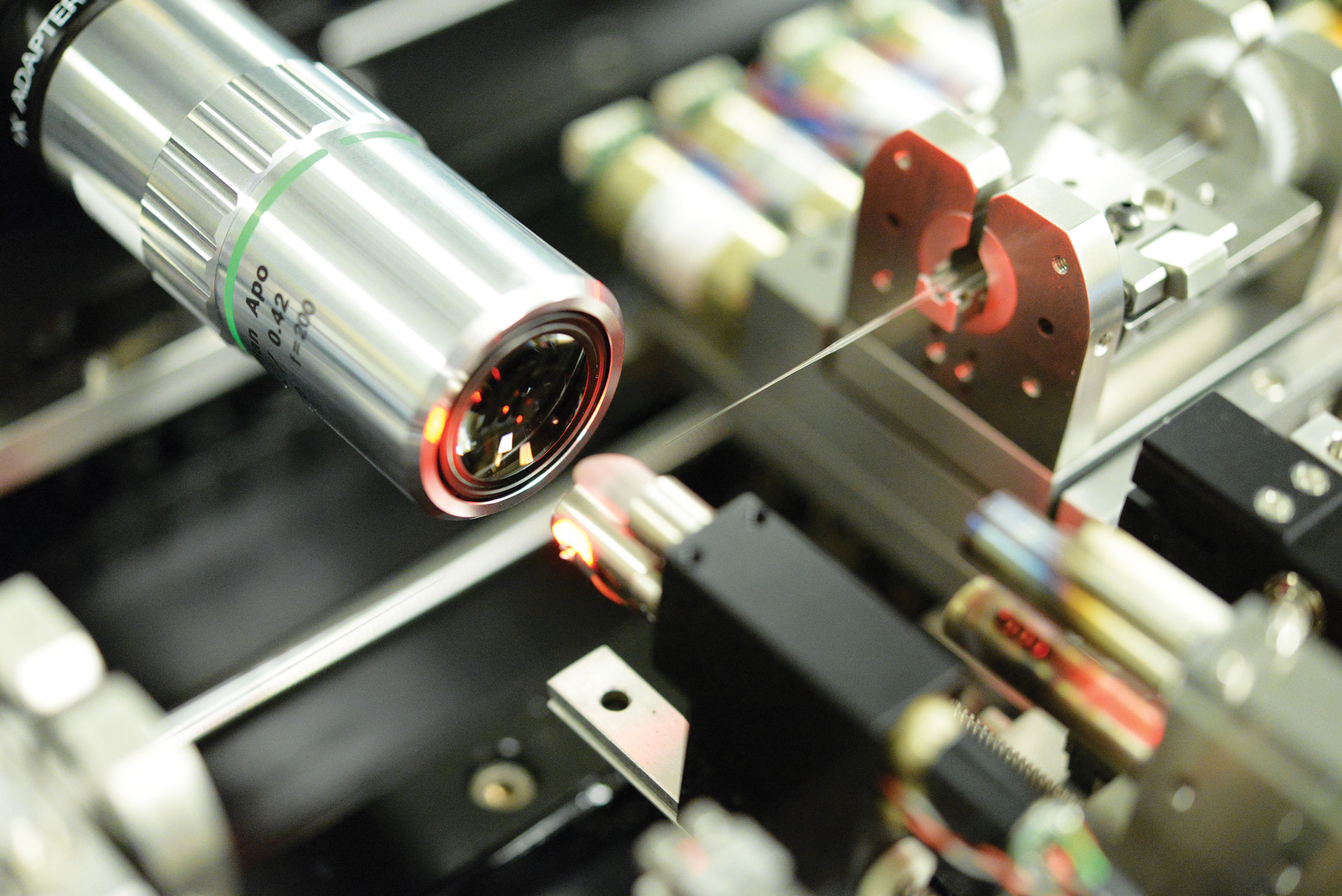Photonic-Lantern-Enhanced Laser Communications

This technique harnesses the ability of a photonic lantern to map light received via a few-mode fiber to many single-mode fiber outputs to meet tomorrow's requirements for high-speed communications from space. The use of single-mode fibers allows the system to take advantage of extremely sensitive digital coherent receivers that operate at many hundreds of gigabytes per second.
Motivation
The next generation of laser communication systems that operate in free space will need to support communication links that transmit to ground stations from distances ranging from low Earth orbit to deep space. These links require that terminals have accurate pointing, acquisition, and tracking (PAT) systems that efficiently couple (i.e., insert) light directly onto a detector or into fiber for subsequent detection. Coupling light into a single-mode fiber is especially challenging because of the fiber's small field of view that can be affected by atmospheric turbulence or a terminal's vibration. Yet, single-mode fiber coupling permits the use of extremely sensitive fiber-coupled single-mode digital coherent receivers that can enable high-speed communications by operating at many 100s of gigabits per second.
Photonic Lantern Solution

The astronomy and fiber telecommunications communities have developed photonic-lantern multiplexers that allow efficient transfer of light from a few-mode fiber to multiple single-mode fiber outputs. Photodetectors at the single-mode outputs convert the received light into electrical signals from which information is extracted for communication. The Lincoln Laboratory photonic lantern–based technology enables the use of high-performance lasercom terminals on platforms that might otherwise have too much vibration to point and track a narrow optical beam. The photonic lantern tracks beam power in different spatial modes and uses that power distribution to determine tilt information (beam positioning) in order to guide PAT. This approach mitigates vibration and does not divert power from the communication receiver to the PAT system, allowing more signal power to be used for communications. By eliminating the need for components to compensate for turbulence or vibration ─ for example, fast steering mirrors or inertial stabilization systems ─ Enhanced Photonic Lantern Lasercom allows for a system with reduced size, weight, and power requirements and thus has the potential to expand the options for platforms on which lasercom terminals can be integrated.
Benefits
- The technique's resilience to atmospheric turbulence and vibration enables a high-performance free-space lasercom terminal that achieves the precise pointing and tracking of a narrow optical beam
- Because the photonic-lantern-based pointing, acquisition, and tracking (PAT) terminal does not take power away from the receiver, all received power can be applied for communications
- Through the use of photonic-lantern technology, the system's overall complexity is reduced while its reliability is increased
Additional Resources
U.S. Patent 10,892,824
More Information
D.J. Geisler et al., "Experimental Comparison of 3-Mode and Single-Mode Coupling over a 1.6-km Free-Space Link," Free-Space Laser Communication and Atmospheric Propagation XXX, vol. 10524, 15 Feb. 2018.
2018 R&D 100 Award winner